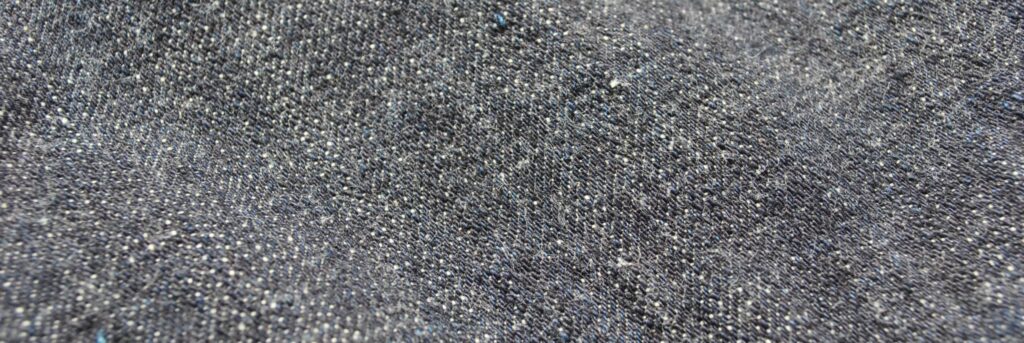DENIM EXPLAINED
Answers to all your questions about denim and how it’s made.

Popular denim FAQs
Start with the answer to some of the most commonly asked questions about denim.
Visit our buying guides before your next purchase. We guide you to the best raw selvedge jeans, denim jackets, heavy flannels, T-shirts, denim shirts, and more.
How denim is made
Looking for more details? In the sections below, we explain the five stages of making denim, step by step. Scroll through the page or jump to a specific section:

Raw materials
Cotton – a natural fibre from the fruit of the cotton plant
How cotton is made – it takes an average of 140 days from planting to picking
Staple length – staple length refers to the length of the fibre

Spinning
Spinning explained – spinning is the process of turning fibres into yarn
How yarn is spun – there are two stages in the spinning process: preparation and the actual spinning
Yarn count – yarn count describes the thickness of yarn
Slubs – slubs are thickenings in yarn that result in a desired unevenness in the colours of denim
Ring spinning – ring spinning is the old-school way that create more slubs in the yarn
Open-end spinning – open-end spinning creates a more even and flat denim. The cotton is fed directly into the ‘spinner’ by a stream of air
The history of spinning – before the Industrial Revolution, spinning was a manual operation
Stretch denim – denim that contains a synthetic elastomer in the yarn (usually only the weft)

Dyeing
Dyeing explained – dyeing is the process of adding colour to yarn
Indigo explained – indigo is the colour that makes blue jeans blue
How to dye with indigo – to get the indigo onto the yarn or the fabric, it’s solubilised in water with the help of a reducing agent
Natural indigo – indigo pigments that are extracted from dried leaves from the indigofera tinctoria plant
Synthetic indigo – a synthesised version of indigo, which is used for almost all denim today
The history of indigo – archaeologists have traced the use of indigo back 6,000 years
Rope dyeing – a continuous dyeing method where the yarns are roped together during the process
Slasher dyeing – a continuous dyeing method where the yarns are laid out as a carpet, also called a sheet, during the process
Hank dyeing – a dyeing method where bundles of yarn, known as ‘skeins,’ are dyed by hand
Rope dyeing and slasher dyeing compared

Weaving
Weaving – the process of interlacing of two sets of yarn
Selvedge denim – denim woven on shuttle looms, which is recognised by the self-finished edges of the fabric
Warp and weft – are the names of the two yarns used to weave denim
Right hand, left hand, and broken twill – different types of twill weaves
Shuttle loom – is the type of loom used to weave selvedge denim
Shuttle – is a device used to carry the weft yarn back and forth on a shuttle loom
Wide loom (shuttleless loom) – is the modern type of weaving machine that most denim is made on today

Fabric finishing
Fabric finishing – processes that either correct and prevent issues of dimensional stability or enhance the look and feel of the denim
Loomstate denim – is denim that hasn’t been treated with any fabric finishing
Sanforization – is a finish of pre-shrinking fabric before it is made into a garment
Pre-skewing – is a finish that eliminates leg twist
Mercerisation – a finish that opens the fibres and gives them a rounder shape
Singeing – is a finish that makes denim smoother
Didn’t find the answer you were looking for? Submit your question here.
